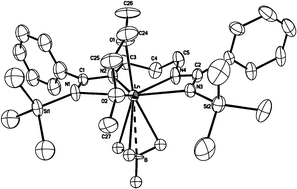Syntheses and structures of lanthanide borohydrides supported by a bridged bis(amidinate) ligand and their high activity for controlled polymerization of ε-caprolactone, l-lactide and rac-lactide†
Abstract

* Corresponding authors
a
Key Laboratory of Organic Synthesis of Jiangsu Province, College of Chemistry, Chemical Engineering and Materials Science, Soochow University, Suzhou 215123, People's Republic of China
E-mail:
qshen@suda.edu.cn
Fax: +86-512-65880305
Tel: +86-512-65880306
b State Key Laboratory of Organometallic Chemistry, Shanghai Institute of Organic Chemistry, Chinese Academy of Sciences, Shanghai 200032, People's Republic of China

 Please wait while we load your content...
Something went wrong. Try again?
Please wait while we load your content...
Something went wrong. Try again?
W. Li, M. Xue, J. Tu, Y. Zhang and Q. Shen, Dalton Trans., 2012, 41, 7258 DOI: 10.1039/C2DT30096F
To request permission to reproduce material from this article, please go to the Copyright Clearance Center request page.
If you are an author contributing to an RSC publication, you do not need to request permission provided correct acknowledgement is given.
If you are the author of this article, you do not need to request permission to reproduce figures and diagrams provided correct acknowledgement is given. If you want to reproduce the whole article in a third-party publication (excluding your thesis/dissertation for which permission is not required) please go to the Copyright Clearance Center request page.
Read more about how to correctly acknowledge RSC content.
 Fetching data from CrossRef.
Fetching data from CrossRef.
This may take some time to load.
Loading related content
